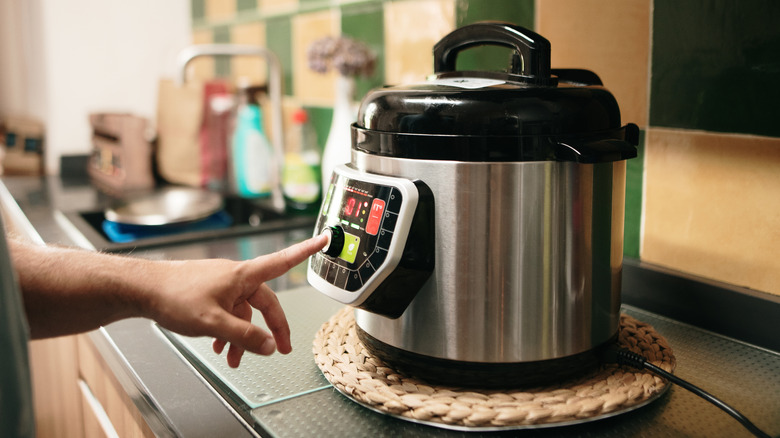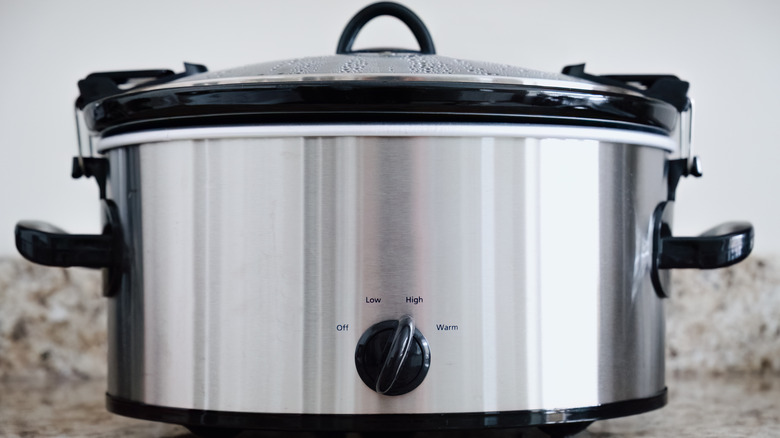How To Adjust Your Slow Cooker Settings For High Altitudes
Whether you love vacationing in a mountain cabin or live in a high-altitude city, you've probably noticed that your favorite recipes don't turn out very well unless you adapt them. Water takes less time to boil, but you need more time to cook food in it because water boils at a lower temperature at high altitudes. Liquids evaporate faster at high altitudes because the air is less humid, so food dries out unless you add more moisture or wrap your food in foil.
Slow cooker recipes are affected, too, thanks to the lower boiling temperature and drier air. You will need to extend your cooking time and ensure that your food is cooking at the proper temperature. If your slow cooker heats food too slowly, bacteria in the food could survive the cooking process, leading to a foodborne illness.
What if your slow cooker has a dial control? Colorado State University Extension suggests that you cook your food on high for one hour, then reduce the cooking temperature to low. At sea level, the low setting brings your slow-cooked food to 200 degrees Fahrenheit, killing harmful bacteria, but at higher altitudes, this won't happen because the boiling point of water is lower. Starting the cooking process on the high setting ensures that your food will reach that all-important 200 degrees Fahrenheit. The United States Department of Agriculture recommends checking your food with a food thermometer before serving to be sure it is at a safe temperature.
Keep a lid on your slow cooker's heat and moisture
As you move to higher elevations, atmospheric pressure and the amount of oxygen in the air decrease. Most recipes are created under the assumption that the cook is at sea level, where water boils at 212 degrees Fahrenheit and the atmospheric pressure is 14.7 pounds per square inch. For cooks at 5,000 feet above sea level, water's boiling point drops to 203 degrees Fahrenheit because atmospheric pressure decreases to 12.3 pounds per square inch. At 10,000 feet, water boils at 193 degrees Fahrenheit, as atmospheric pressure is just 10.2 pounds per square inch.
All this science explains why you must increase your cooking times at higher elevations. Water boils more quickly, but it's boiling at a lower temperature, so your food will take longer to cook. So, resist the temptation to lift your slow cooker's lid. Steam will escape, causing a temperature drop inside the slow cooker. It takes the typical slow cooker about 20 minutes to get back to its proper cooking temperature, which will extend your cooking time. Also, the escaping steam will remove moisture from the slow cooker, which could result in dried-out food. Instead, try placing a layer of aluminum foil over your food and below your slow cooker's lid to keep heat and moisture from escaping.

